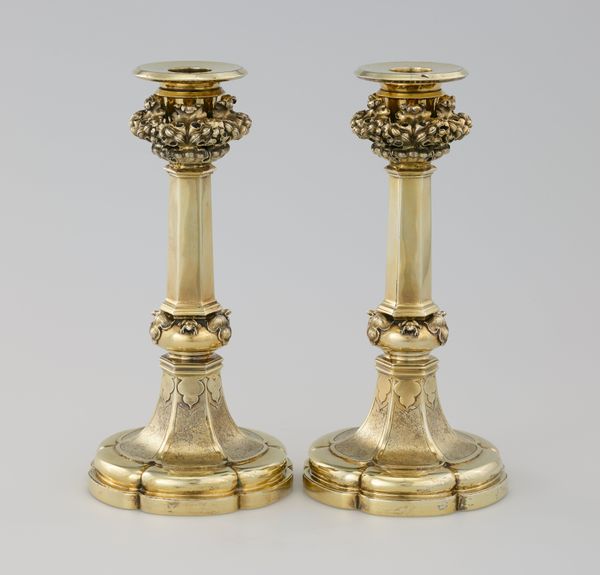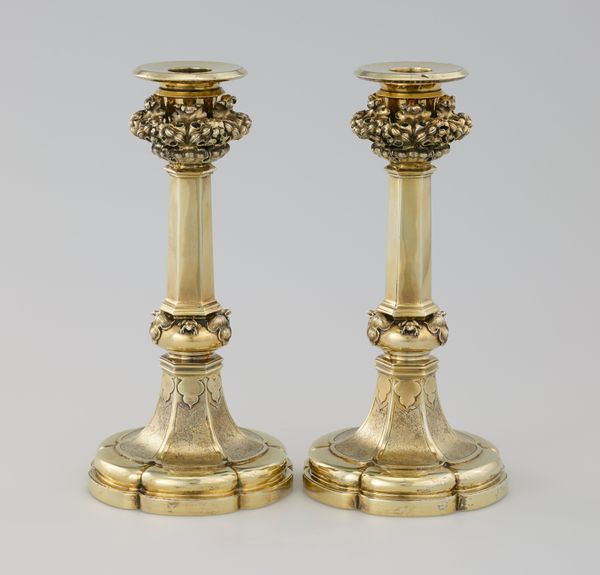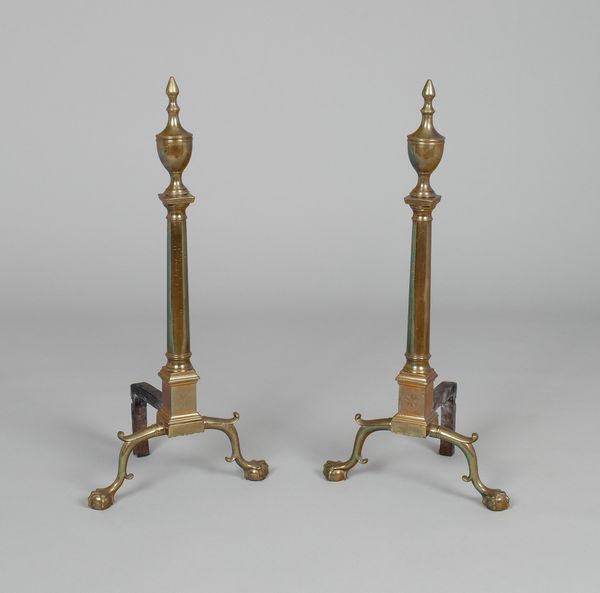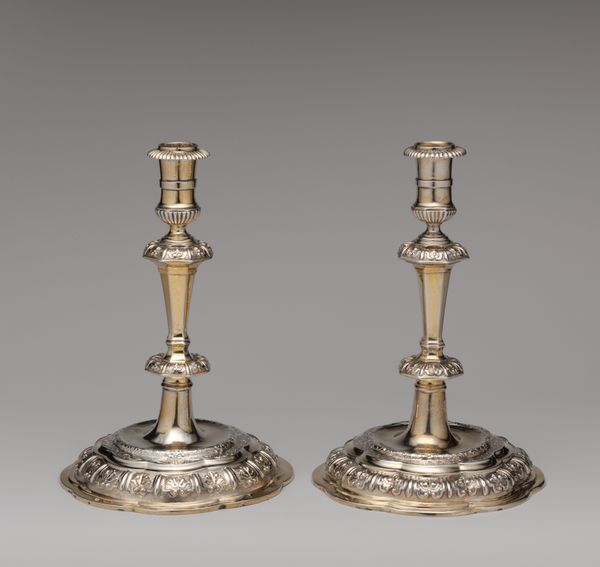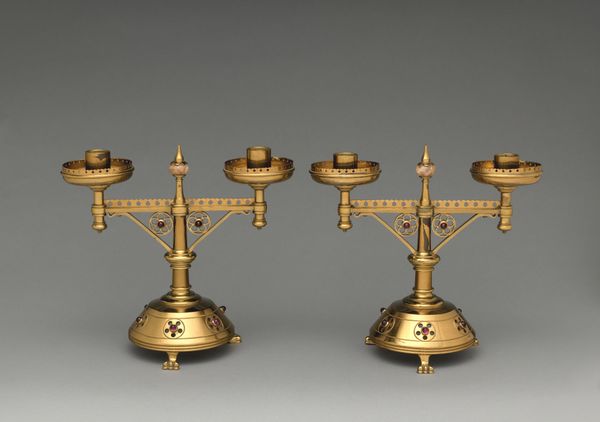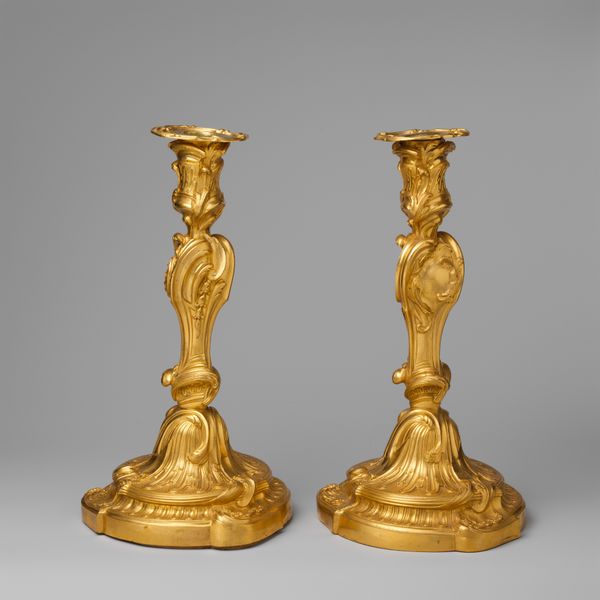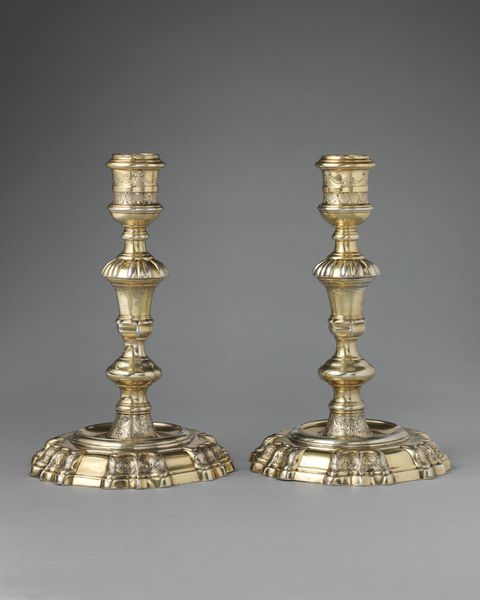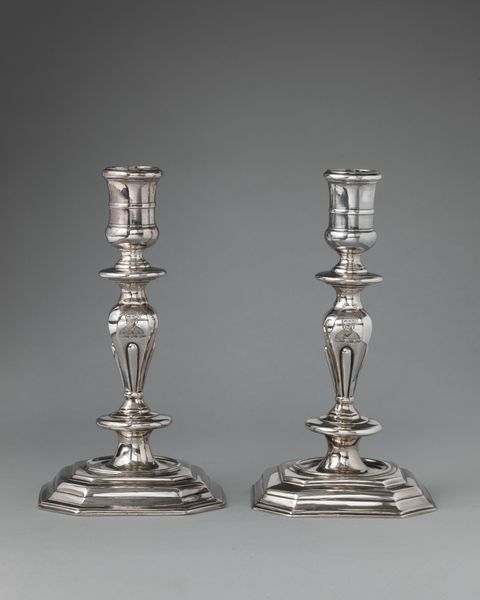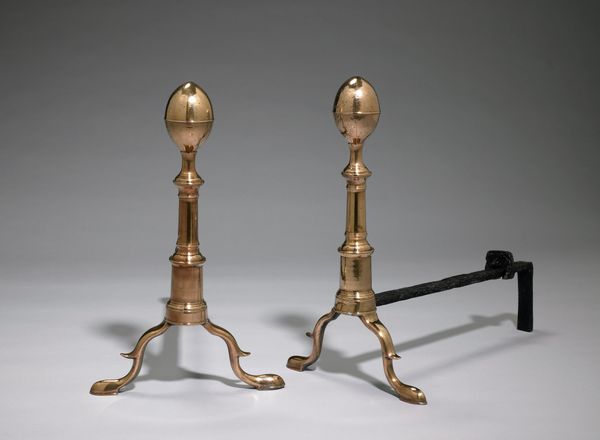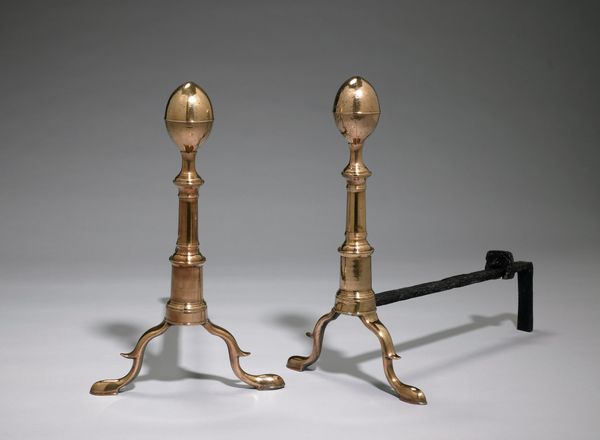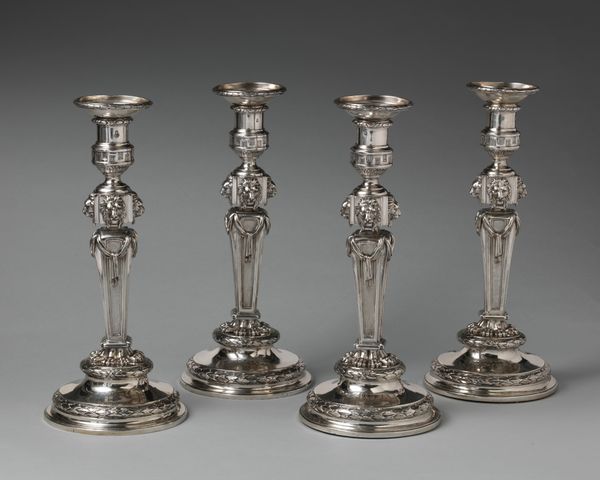
Pair of candelabra bearing the arms of the Duke of York (1763–1827) 1788 - 1789
0:00
0:00
brass, silver, metal, metalwork-silver, sculpture
#
neoclacissism
#
brass
#
silver
#
metal
#
metalwork-silver
#
sculpture
#
decorative-art
Dimensions: Overall (each): 23 7/8 × 14 3/4 in. (60.6 × 37.5 cm)
Copyright: Public Domain
Curator: Standing before us, we have a pair of candelabra, crafted sometime between 1788 and 1789. The signature of Henri Auguste marks them as undeniably exquisite works from the late 18th century. Editor: They positively gleam. There’s a strong sense of symmetry and formal grace about them—almost unsettling in its perfection. It feels less like practical lighting and more like instruments for ceremony or some important symbolic function. Curator: Indeed, their creation coincides with the burgeoning Neoclassical movement. We see that adherence to classical ideals through the elegant lines, balanced proportions, and minimal ornamentation—hallmarks of that style's revival of antiquity. Editor: Given their opulence, who would have commissioned such pieces? Was it strictly about aesthetics, or did these signal something about their owner's power or status? Curator: They were commissioned for the Duke of York, as is betrayed by the coat of arms, thus these weren't mere decorative objects; they served as symbols of status, illuminating the Duke's prestige and connecting him visually with established noble lineages. The imagery becomes another layer in understanding late 18th century socio-political maneuvering. Editor: Interesting. And if we think about light, the substance they were intended to hold, it holds multiple meanings: illumination of thought and, of course, celebration. It almost seems that its ornamental value becomes an amplifier for pre-existing symbolic meanings of nobility. Curator: Precisely, especially during an era defined by Enlightenment ideals challenging traditional forms of authority. Decorative art becomes an ideological statement through these classical allusions. It is luxury, but its more about establishing continuities with the perceived wisdom of antiquity, too. Editor: They seem like artifacts born out of a period grappling with immense societal change—ornaments simultaneously facing toward the past and reflecting an uncertain future. Thank you, this object carries a weighty history. Curator: A fascinating collision of aesthetic refinement and social significance, indeed!
Comments
No comments
Be the first to comment and join the conversation on the ultimate creative platform.

